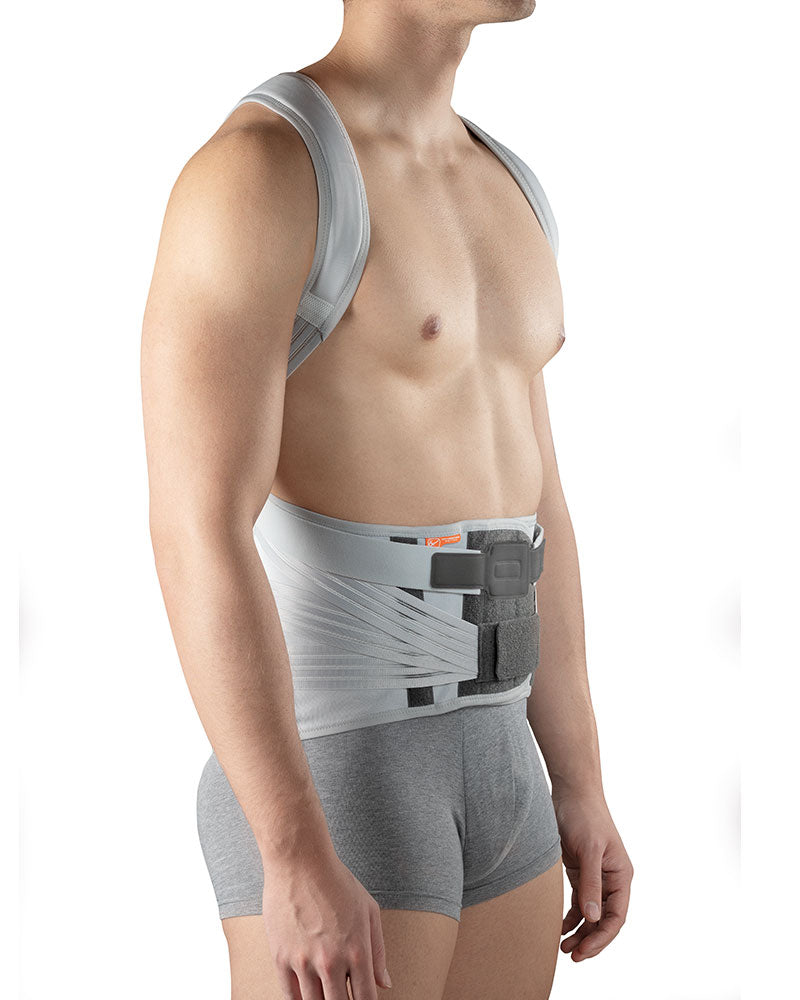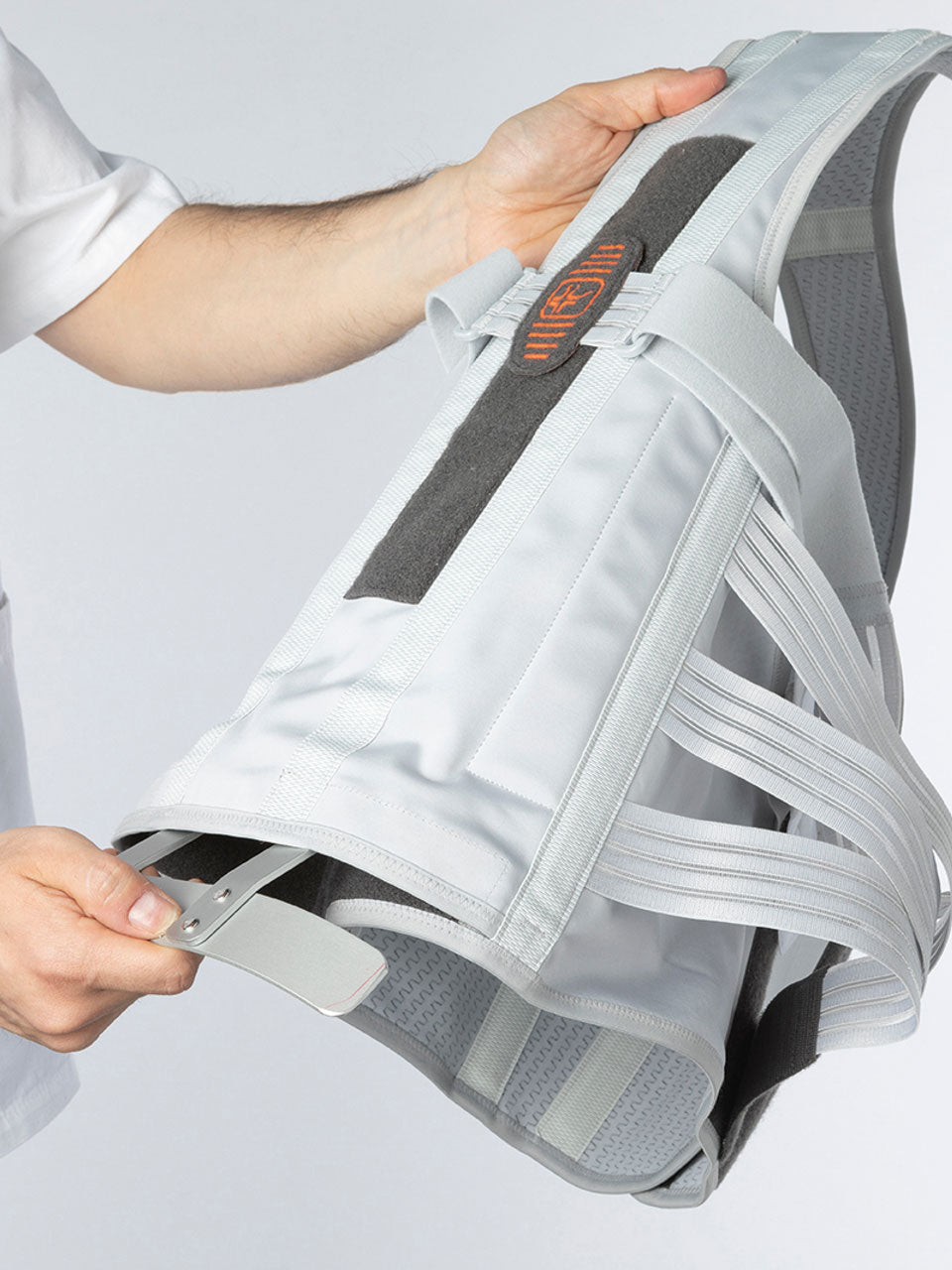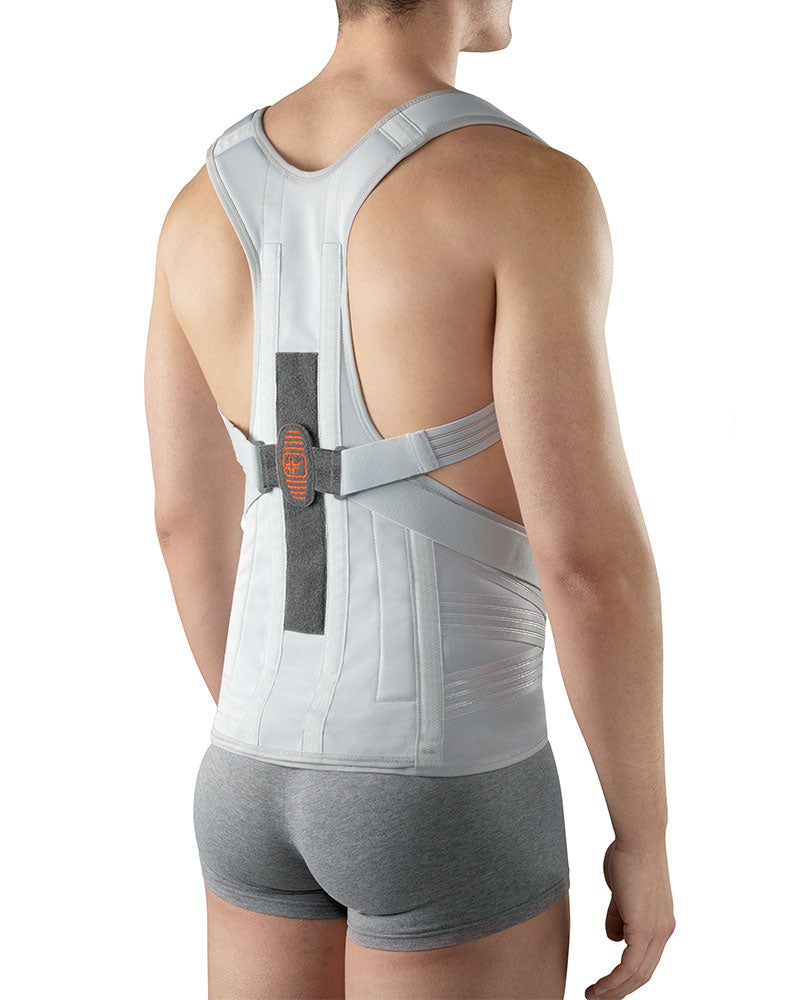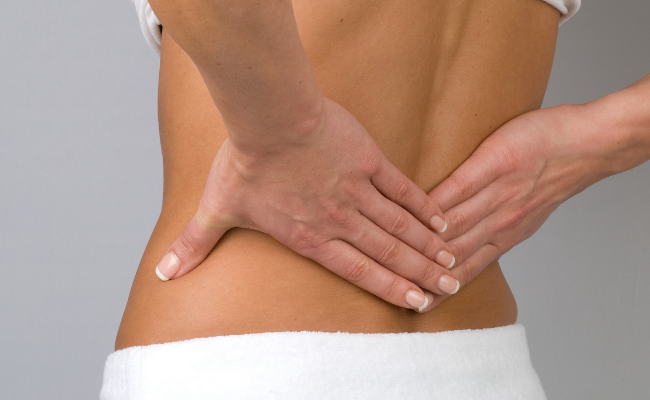


Dorsālā-jostasvietas korsete ar plecu siksnām un atbalsta rāmi FLEX-B
Ir reizes, kad mugurkaulam ir nepieciešama palīdzība, lai atvieglotu svaru, ko tas atbalsta. "Komandas darbs" ir būtisks, lai nodrošinātu atbilstošu atbalstu: materiāliem un dizainam ir jāsadarbojas, lai nodrošinātu atbilstošu kompresiju un palielinātu intraabdominālo spiedienu, bet nemainot trofiku vai muskuļu tonusu.
Tāpēc elastīga auduma un metāla rāmja kombinācija tika izstrādāta, lai garantētu efektivitāti, piemērotību un komfortu: tā palīdz pacientiem atgūt kustīgumu, nodrošinot vislabāko iespējamo stāju un izvairoties no jebkādām kaitīgām pozām. Korsete tiek uzvilkta kā mugursoma, padarot to ērtu valkāšanai.
Indications
Color:
Ready to ship
Made from sustainable materials
Izvēlieties variantus





